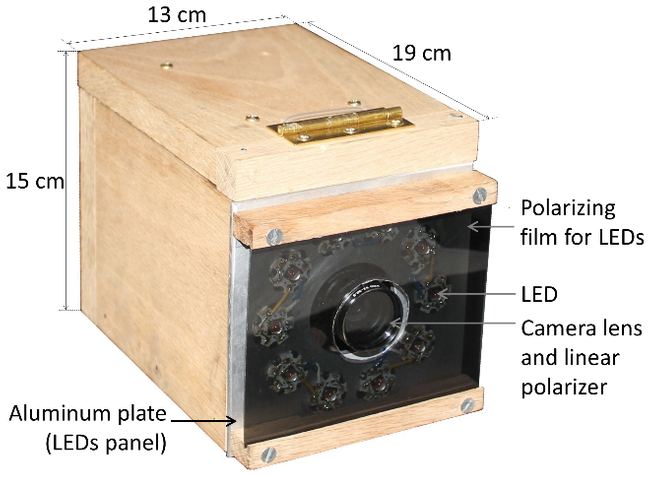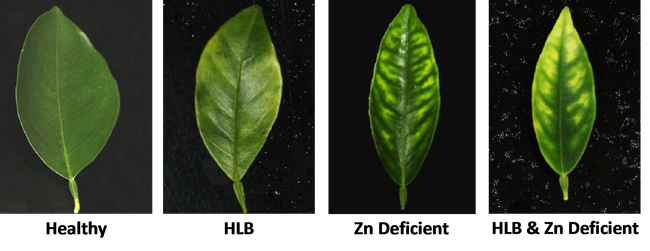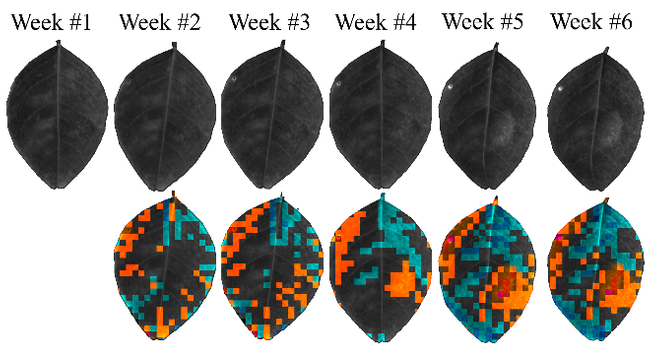- Author: Jeannette E. Warnert
Three citrus trees that produce inedible fruit at the UC Lindcove Research and Extension Center in Visalia may be a game-changer for the citrus industry, reported Ezra David Romero on Valley Public Radio.
The trees are thought to be resistant to huanglongbing, a severe disease of citrus that has devastated the Florida industry and could become a serious problem in California. The citrus-saving potential of the three 34-year-old trees was outlined in an article by UC Agriculture and Natural Resources writer Hazel White in the most recent issue of California Agriculture journal.
UC Riverside citrus breeder Mikeal Roose collected seed from the trees and will test seedlings as soon as they are large enough.
"So what (breeders) have to do is cross this with some edible varieties and eventually create something that has the gene for resistance, but also the genes for good fruit," said Beth Grafton-Cardwell, Lindcove director and research entomologist.
Huanglongbing disease has cut citrus production in Florida by more than half. It's been found in residential citrus trees in Southern California, but hasn't reached the state's vast commercial orchards yet. Grafton-Cardwell said she expects the disease will arrive in 4 or 5 years.
Yeah!!!!
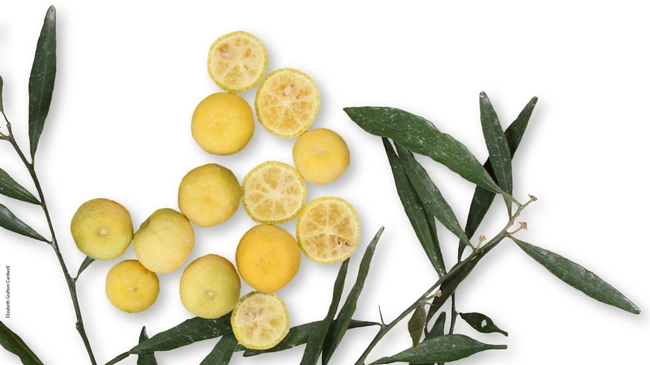
- Author: Ben Faber
A new ruling from CDFA to modify the announcement from March 2. Read on:
|
CDFA suspends enforcement of new citrus rule |
|
The California Department of Food and Agriculture announced March 2 that it was suspending enforcement of a new regulation regarding transport of bulk citrus, the day after the new rule took effect. The department said "the decision was made as a courtesy to the citrus industry to allow for additional time to prepare citrus operations to comply with the new rule, which requires all bulk citrus loads to be fully covered regardless of the origin or the destination. Additionally, CDFA is continuing to process and return compliance agreements." Although enforcement has been suspended indefinitely, CDFA is expecting haulers to voluntarily abide by the new rule. Compliance can be achieved several ways, including but not limited to the use of a shipping container, tarp, enclosed vehicle (including curtain vans), or another method that completely covers bulk citrus during transport. If using a tarp, tarps must reach the bed of the truck. |
From March 2, 2017
From AgNet West, http://agnetwest.com/2017/02/27/citrus-tarping-starts-march-1/
As of March 1, 2017, all citrus loads traveling throughout the state of California have to be tarped. This regulation aims to reduce the accidental transportation of the Asian citrus psyllid (ACP).
The Citrus Pest and Disease Prevention Program (CPDPP) is helping to get the word out about the new regulation. “That regulation is stating that every load, regardless of origin or destination, must be tarped,” CPDPP Grower Liaison Erin Betts said. “You don't have to use a tarp. You can use a van or something that is completely covered on all four sides, down to the bed.”
Counties north of the grapevine region have been noticing a trend with ACP finds in the area, and the new tarping regulation hopes to limit some of the accidental transportation the industry is seeing. “When we started having finds, they were all along the major transportation corridors,” Betts said. “So if we cover these loads that are coming and going from wherever, we are preventing that psyllid from hopping off … at a stop light or a stop sign in the middle of the Citrus Belt, Kern County or anywhere.”
All citrus loads being transported in California will now have to be fully covered by tarps. The state passed an emergency law that makes tarping mandatory in an attempt to reduce the accidental spread of the Asian citrus psyllid (ACP).
From the Citrus Pest and Disease Prevention Program (CPDPP):
The California Office of Administrative Law approved an emergency rule that requires all bulk citrus loads to be fully tarped during transport regardless of where the load originates from or its destination. The statewide mandatory tarping regulation is in response to a recommendation from the Citrus Pest and Disease Prevention Committee (CPDPC) to prevent the spread of the Asian citrus psyllid. The California Department of Food and Agriculture will begin contacting growers, haulers and packers to re-sign compliance agreements that include the tarping requirement. These entities are urged to begin preparations now while they wait to receive new compliance agreements.
Why did the Citrus Pest & Disease Prevention Committee ask for a mandatory tarping regulation?
The statewide mandatory tarping regulation is a preventive action to address the spread of the Asian citrus psyllid, and is in response to an analysis conducted by the University of California that looked at Asian citrus psyllid find patterns along transportation corridors. As the number of psyllid finds increase in commercial citrus regions and along major transportation corridors, the CPDPC felt the action was a necessary step to help prevent the spread of Huanglongbing – the deadly citrus tree disease that the psyllid can carry.
What are the regulatory requirements?
The new requirement is a statewide regulation that restricts the movement of regulated articles from “or within” a quarantine area. Revised compliance agreement exhibits will require all bulk citrus loads to be fully tarped regardless of where the load originates from or its destination, even loads that are traveling within a county. Specifics of the requirements will be released soon. In the meantime, producers can review USDA's tarping compliance requirements for general guidelines. Read the full press release from the CPDPP.
New tarping rules are in effect for California citrus. The industry must comply, or it will face costly penalties. Tarping fines could add up to $10,000.
A new regulation requires citrus loads to be tarped or fully enclosed as they travel through the state. “There were new compliance agreements that were mailed out,” Citrus Pest and Disease Prevention Program Grower Liaison Erin Betts said. “The new regulation states that every load, regardless of origin or destination, must be tarped.”
Betts said not complying with the new rules can be very costly. “The fine is not only for if you don't have your load tarped properly, but also if you do not have your compliance agreement with you,” Betts said. “That violation could be up to $10,000.”
According to Betts, the industry has many ways to make sure they are properly complying with the regulation. “(The industry) can contact the county, local grower liaisons and also the California Department of Food and Agriculture.”
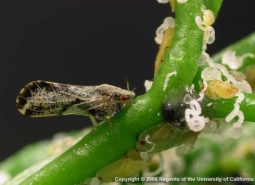
- Author: Godfrey Miles, Ed Stover, Chandrika Ramadugu, Manjunath Keramane and Richard Lee
In a Fort Pierce, FL, field planting, plant growth, and Huanglongbing (HLB)
severity were assessed as indicators of HLB tolerance on progenies of 83 seed-source
accessions of Citrus and Citrus relatives mainly from the Riverside, CA, genebank. The
HLB-associated pathogen [Candidatus Liberibacter asiaticus (CLas)] and vector [asian
citrus psyllid (ACP), Diaphorina citri] were abundant, and trees were naturally
challenged for 6 years before metrics (leaf mottle, percent canopy mottle, overall health,
canopy density, canopy width, canopy height, and trunk diameter) were collected in Oct.
and Nov. 2015. The healthiest trees with low or no HLB symptoms were distant citrus
relatives: Balsamocitrus dawei, Bergera koenigii, Casimiroa edulis, Clausena excavata,
Murraya paniculata, and one accession of Severinia buxifolia. Within Citrus, most of the
healthiest trees with densest canopies, little leaf loss, and greater growth were those with
pedigrees that included Citrus medica (citron). These included progenies of Citrus hybrid
(‘Limon Real'), Citrus limetta, Citrus limettioides, Citrus limonia, C. medica, Citrus
volkameriana, and some Citrus limon accessions. Trees in this category exhibited distinct
leaf-mottle characteristic of HLB and substantial pathogen titers, but maintained dense
canopies and exhibited good growth. Trees from seed-source accessions in the genus
Citrus without citron in their background were generally among the least healthy overall
with less dense canopies. The exceptions were progenies of two Citrus aurantium
accessions, which were markedly healthier than progenies of other Citrus seed-source
accessions not derived from citron. Linear regression analysis, between metrics collected
and pedigree of seed parent, indicated that percentage of citron in the pedigree
significantly correlated with measures of tolerance. Although no commercial Citrus
genotypes yielded progenies with strong HLB resistance, in this field experiment several
progenies maintained dense canopies and good growth, and may be useful for breeding
HLB tolerant cultivars.
HORTSCIENCE 52(1):31–39. 2017. doi: 10.21273/HORTSCI11374-16
Photo: HLB Leaf Symptoms
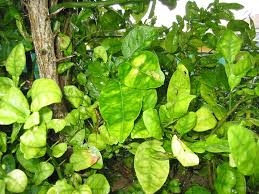
- Author: Ben Faber
The latest National Agricultural Statistics Service (NASS) results are out for the citrus crop. These are results that are collected by the USDA to gauge production in the different growing areas of the country. From this most recent data, it is clear that citrus production is diminishing with time, most likely the effect of Huanglongbing. This is about a 60% decline from 2015.
The impact of this reduced production has reached out to not just growers, but also the juice industry they support, or are supported by. There's been a decline in the number of juice plants since 2014 which are reliant on volume to stay in business. If plants close, growers have fewer options for their juice citrus. http://www.theledger.com/news/20140705/at-least-one-juice-processor-expected-to-close
Most commercial crop production figures are collected by state and summarized on a state basis with the Agricultural Census every 10 years - https://www.agcensus.usda.gov/. The last was done in 2012.
Daily market prices for these different commodities can be seen on a wholesale basis by city, at USDA's Market News Service - https://www.marketnews.usda.gov/mnp/fv-home . This gives current prices and archived prices for products sold in different markets. It gives a general idea of what the grower will be paid for a given crop.
All of these sources are helpful for deciding where crop prices and markets are going. If you have time check them out.
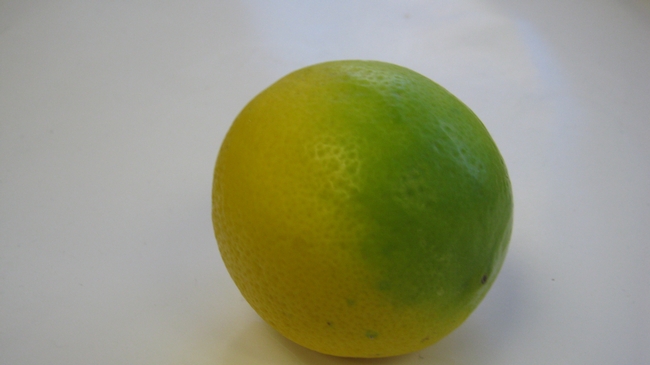
- Author: Alireza Pourreza
Kearney Research and Extension Center, University of California Cooperative Extension
California is the major producer of fresh market citrus in the U.S., a $2 billion industry that is threatened by a devastating disease called citrus Huanglongbing (HLB). Unfortunately, there is no cure for this disease and if a tree gets infected, it will die in a few years. In Florida, HLB was first seen in 2005, but after a few years the entire state of Florida got infected. Today, about 60% of Florida citrus has gone, mostly because there was no efficient HLB monitoring practice. HLB diagnosis using laboratory-based methods required manual sampling and they were time and effort consuming. An efficient HLB management requires high spatial and temporal resolution monitoring and eradication of infected trees. Therefore, a diagnosis sensor is needed for detecting HLB infected canopies before the development of symptoms. For high resolution monitoring, the sensor should also be able to conduct rapid and inexpensive inspection with high accuracy.
Starch accumulation in HLB infected leaves is an early indication of the disease. Starch has an optical characteristic of rotating the polarization plane of light. We employed this characteristic of starch to develop an early detection methodology in which the sensing system was very sensitive to the rotation in polarization plane of light. The sensor has a customized illumination system including 10 high-power and narrow band LEDs at 591 nm and a polarizing film. The sensor also has a monochrome camera equipped with a linear polarizing filter that is set in a perpendicular direction to the polarizing film of the illumination system.
Starch accumulation in an HLB infected leaf generates blotchy mottle in an asymmetrical yellowing pattern. Deficiency of certain nutrients such as Mg and Zn causes symptoms similar to HLB.
The sensor was mounted on a gator vehicle and was tested in a citrus grove in Florida. The polarized images acquired from healthy, HLB, and Zn deficient canopies were further analyzed for diagnosis purpose.
HLB samples were accurately identified from healthy and Zn deficient samples. Also, the sensor was able to detect HLB within Zn deficient samples.
The polarized imaging methodology was adopted in two separate studies at the University of Florida to investigate the earliest time HLB can be diagnosed by polarized imaging technique after infection. In one study, two-year old Valencia orange plants were inoculated using disk-graft method.
Time-lapse polarized images of leaves from inoculated citrus plants were acquired on a weekly basis. HLB symptoms (as starch accumulation) started to become visible in the polarized images five weeks after inoculation, while the plants were still in asymptomatic stage.
In another study, the polarized imaging methodology was employed to detect HLB in insect inoculated citrus seedlings while in asymptomatic stage. Citrus seedlings were exposed to intensive HLB-positive Asian Citrus Psyllid (ACP) feeding. Polarized images were acquired two times; once after one month after inoculation and again two months after inoculation. As well as HLB detection, the level of infection was obtained for different leaf samples. Polymerase chain reaction (PCR) tests were conducted to validate the HLB status and the level of infection in each leaf sample.
Currently, we focus on improving the accuracy and early detection performance of the polarized imaging sensor and developing a commercialized product for practical in-field diagnosis. This affordable tool can help the California citrus growers to protect their groves from HLB.
Photos, from top to bottom:
Sensor Prototype
Leaf Symptoms of HLB and Zn Deficiency
Time Lapse Images of HLB Infected Leaves Over Time
